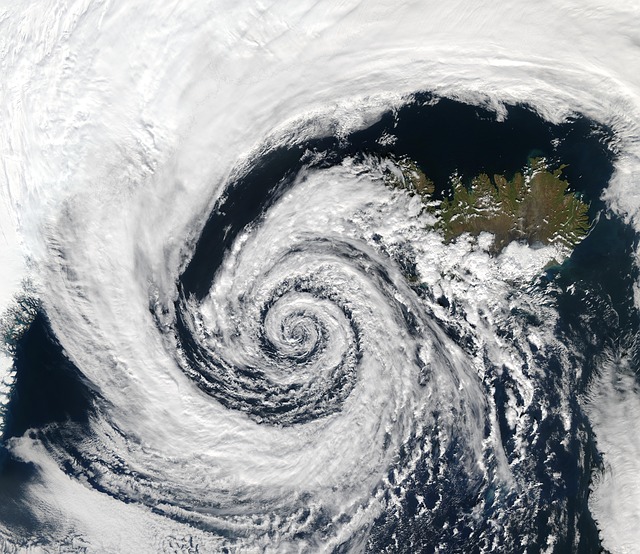Pacific Cyclone Season – La Niña Poses Increased Threat
The Pacific Islands may be facing an increased threat of a Tropical Cyclone this coming cyclone season as NOAA’s Climate Prediction Center confirm that a La Niña climate pattern has developed in the Pacific and is likely to persist through the winter.
Published 5 years ago


NOAA explain the difference between El Niño and La Niña very well;
“El Niño and La Niña are extreme phases of a naturally occurring climate cycle referred to as El Niño/Southern Oscillation. Both terms refer to large-scale changes in sea-surface temperature across the eastern tropical Pacific. Usually, sea-surface readings off South America’s west coast range from the 60s to 70s F, while they exceed 80 degrees F in the “warm pool” located in the central and western Pacific. This warm pool expands to cover the tropics during El Niño, but during La Niña, the easterly trade winds strengthen and cold upwelling along the equator and the West coast of South America intensifies. Sea-surface temperatures along the equator can fall as much as 7 degrees F below normal.”
La Niña conditions recur every few years and can persist for as long as two years.
The effects of La Nina are extensive:
– “La Nina can contribute to an increase in Atlantic hurricane activity by weakening the wind shear over the Caribbean Sea and tropical Atlantic Basin, which enables storms to develop and intensify,
– During the winter, La Nina typically brings above-average precipitation and colder-than-average temperatures along the northern tier of the U.S., along with below-average precipitation and above-average temperatures across the South.
– La Niña conditions typically mean the risk of tropical cyclone activity is elevated for island nations in the western part of the region (New Caledonia, Solomon Islands and Vanuatu) and reduced for nations in the east (French Polynesia and the Cook Islands). But there are exceptions, particularly when certain climate influences like the Indian Ocean Dipole occur with La Niña events.
– Both northern Australia and NZ will see more storms this coming their way. With cyclone season in the Pacific starting on 1 November, weather watchers are watching closely to see if a cyclone will form earlier than normal – a trend in La Nina years.
The Marine Weather Center in their Tropical Outlook posted: We are now fully entrenched in a La Nina, which is characterized by cooler than normal water temperatures across the equatorial Pacific off South America.
Expert climatologists are reasonably confident we are going to see above-average cyclone activity this year.
Cynthia Rasch of Port Denarau Marina in Fiji has liaised with meteorologists to finalise their cyclone plan for the season, earlier than normal as so many more vessels have remained in Fiji’s waters given the situation of closed borders in NZ and Australia. Cynthia says the weather experts had indicated an “active season”.
“It’s going to get fairly wet and at this moment there’s a prediction of about four cyclones within our vicinity, but we’ll see how that pans out.”
The marina will be conducting workshops regarding cyclone procedures at the marina very soon, as well as during the Musket Cove Regatta, details of which will be communicated to all yachts who wish to utilise the mangrove shelter adjacent to the marina channel. Cynthia recommends that all yachts in Fiji familiarise themselves with the cyclone procedures on the marina website and contact the marina team [operations@denaraumarina.com] to be included in their cyclone haulout/ mangrove shelter list. The marina doesn’t have rights to the mangrove shelter as it isn’t within their leased boundary and therefore has to request usage of this with the village.
The marina also publishes weather advisories – simply subscribe here – and recommends skippers also listen carefully to the Fiji Meteorology Office www.met.gov.fj.
Current guidance on tropical cyclones in the Southwest Pacific region is produced by the National Institute of Water and Atmospheric Research, the Australian Bureau of Meteorology and the Fiji Meteorological Service.
Further Reading:
- La Niña FAQs by NOAA
- Australian Bureau of Meteorology – Tropical Cyclone seasonal outlook for The Coral Sea (13 October, 2020)
- More cyclones, an earlier season, and more landfalls as La Nina cycle declared (2 October, 2020 – ABC News)
- Foreign yachts in Fiji preparing for an expected four cyclones this season (2 October, 2020 – RNZ)
- SW Pacific: Long Range Tropical Cyclone Outlook 2020/21 (September 23, 2020 – Noonsite)
- Storm warning: a new long-range tropical cyclone outlook is set to reduce disaster risk for Pacific Island communities (21 July, 2020 – The Conversation)
……………………………………………………………………………………………………………………………………….
Noonsite has not independently verified this information.
Related to following destinations: Australia, Cook Islands, Fiji, French Polynesia, New Caledonia, New Zealand, Tonga, Vanuatu
Related to the following Cruising Resources: Hurricanes and Tropical Cyclones, Pacific Ocean South, Routing, Weather







